The Goshawk (Accipiter gentilis) stands as a testament to the majesty of avian predators, a formidable raptor with a wide-ranging habitat across the Northern Hemisphere.
Renowned for its adaptability, agility, and keen hunting prowess, the Goshawk has captivated the fascination of ornithologists and nature enthusiasts alike.
Its robust build, marked by broad wings and distinctive plumage, reflects both the power and elegance inherent in its flight.
With striking facial markings, bright eyes, and unique tail bands, the Goshawk carries an unmistakable visual signature.
As an apex predator, it navigates diverse ecosystems, from dense forests to open woodlands, exhibiting a dynamic lifestyle shaped by intricate nesting behaviors, courtship displays, and a silent yet potent presence in the wild.
Exploring the life history and identifying characteristics of the Goshawk unveils a captivating story of survival, adaptability, and the intricate balance it maintains within the ecosystems it calls home.
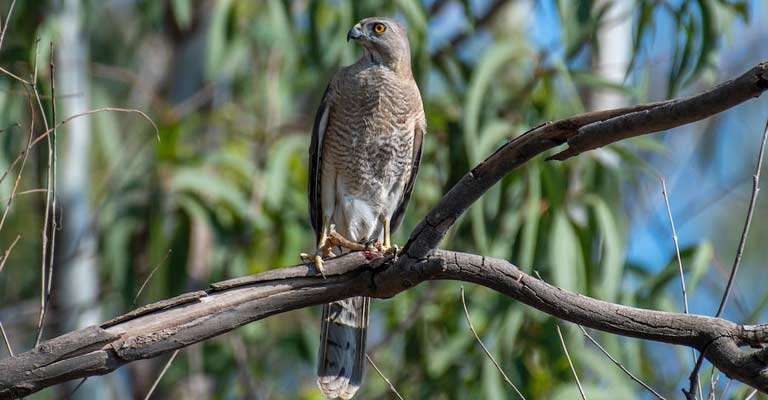
Identifying Characteristics of Goshawk
Identifying the Goshawk (Accipiter gentilis) in the wild requires a keen eye and an understanding of its distinctive characteristics. These birds of prey are known for their agility, adaptability, and unique features that set them apart from other raptors.
Here are eight key points to help identify the Goshawk:
Size and Build
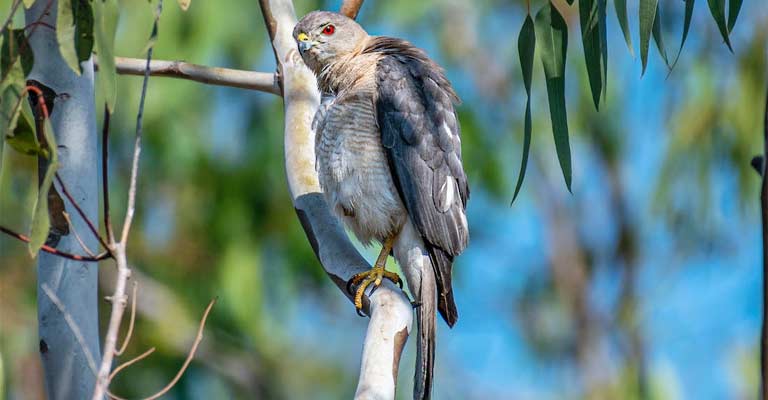
Goshawks are robust and medium to large-sized raptors, with adults typically measuring between 20 to 26 inches in length.
They boast a sturdy build, characterized by broad shoulders and relatively short, powerful wings. This physical structure is a key factor in their swift and precise flight.
Plumage Coloration
The plumage of Goshawks exhibits a striking combination of colors. Generally, adults feature a slate-gray to bluish-gray upper body, while the underparts showcase a mix of white and fine gray barring.
Immature Goshawks, on the other hand, may display brownish tones in their plumage.
Facial Markings
One of the most distinct features of the Goshawk is its facial markings. They typically have a bold, white supercilium (eyebrow stripe) above a darker eye line.
This gives the appearance of a pronounced “hood” over the eyes, contributing to their distinctive and fierce expression.
Eye Color
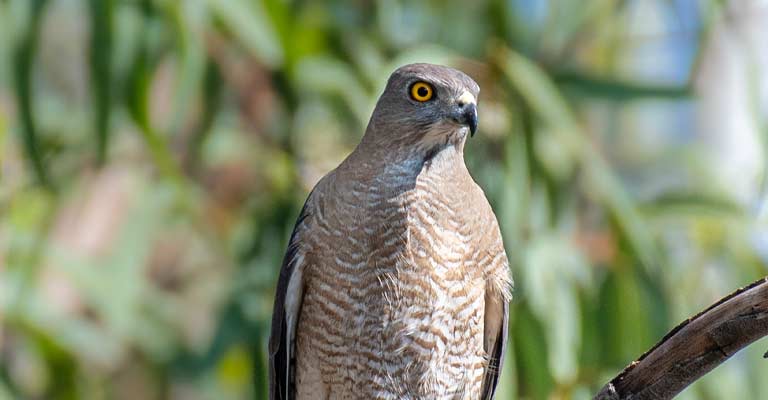
Goshawks possess bright yellow or orange eyes, which stand out prominently against their darker facial markings. The intensity of the eye color contributes to their keen vision, crucial for spotting prey during flight.
Tail Bands
Another identifying characteristic is the presence of dark bands on the tail feathers.
The tail is relatively long and squared at the tip, and the bands are usually more prominent on the underside. These tail bands are a helpful feature in distinguishing Goshawks from other similar raptors.
Flight Pattern
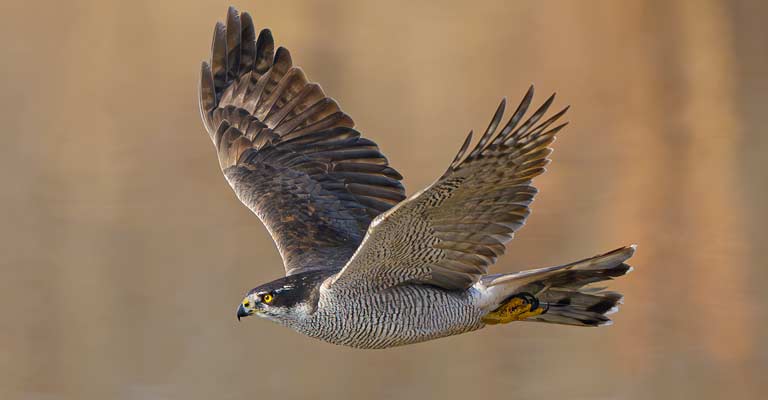
Goshawks exhibit a characteristic flight pattern marked by powerful, rapid wing beats interspersed with gliding.
During pursuits of prey, they showcase incredible agility, effortlessly navigating through dense vegetation with their short, broad wings and long tail.
Habitat Preferences
Observing the habitat can also aid in identification. Goshawks are adaptable and can be found in various environments, including forests, woodlands, and open landscapes.
They are often associated with areas providing a mix of cover for hunting and open spaces for flight.
Behavioral Traits
Paying attention to behavioral traits can be instrumental in identification. Goshawks are known for their secretive nature when perched, often choosing concealed locations.
During hunting, they employ a sit-and-wait strategy, ambushing prey from strategic vantage points.
Recognizing the Goshawk involves a holistic understanding of its physical characteristics, plumage patterns, flight behaviors, and preferred habitats.
Whether soaring through the sky or perched in the canopy, these raptors showcase a unique set of features that, when carefully observed, make identification an enriching experience for bird enthusiasts and naturalists alike.
Taxonomy of Goshawk
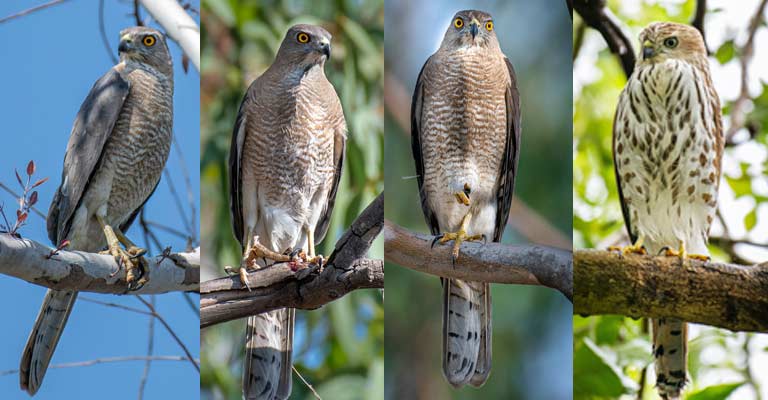
Here are all the taxonomical details of Goshawk:
| Taxonomic Level | Classification |
| Domain | Eukaryota |
| Kingdom | Animalia |
| Phylum | Chordata |
| Class | Aves |
| Order | Accipitriformes |
| Family | Accipitridae |
| Genus | Accipiter |
| Species | A. atricapillus |
This table outlines the taxonomic details of the Goshawk (Accipiter atricapillus) from the broadest classification level (Domain) down to the specific species level.
Here are the subspecies of this type of hawk:
African Goshawk
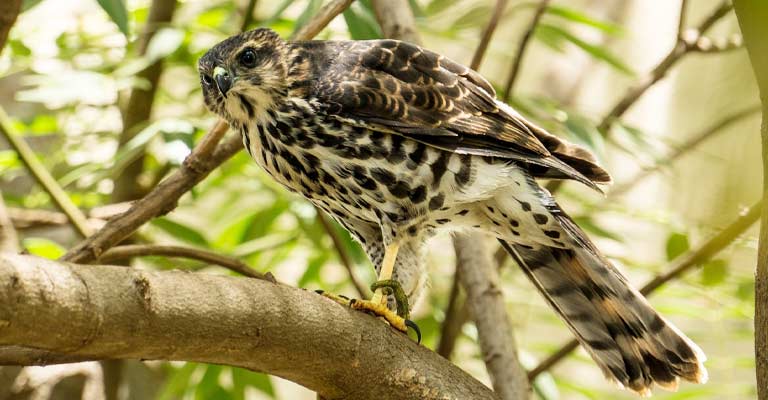
The African Goshawk (Accipiter tachiro) is a striking raptor native to sub-Saharan Africa. Sharing the same species as the Goshawk, this bird exhibits subtle variations in its appearance and behavior.
The African Goshawk is known for its compact build, short wings, and long tail, characteristics adapted for navigating through dense vegetation during hunts.
Moluccan Goshawk
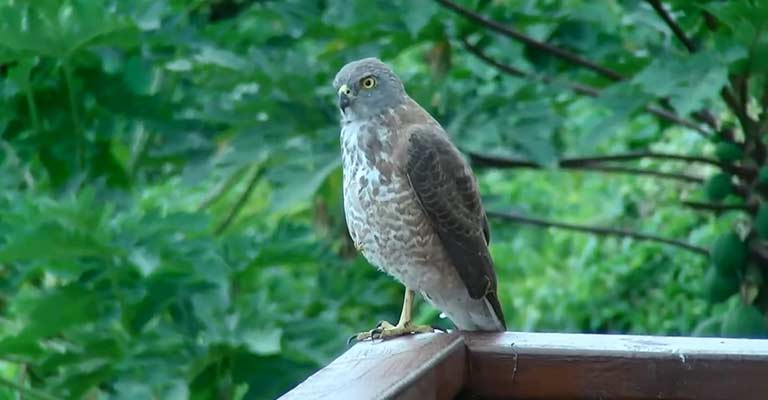
The Moluccan Goshawk (Accipiter henicogrammus) is a species inhabiting the Moluccan Islands in Indonesia. Despite sharing the same genus as the Goshawk, the Moluccan variety possesses unique features.
Its plumage displays a mix of browns and grays, reflecting the lush island environment it calls home.
With a penchant for hunting in both dense forests and open areas, the Moluccan Goshawk sustains itself on a diet of small birds, reptiles, and insects.
Brown Goshawk
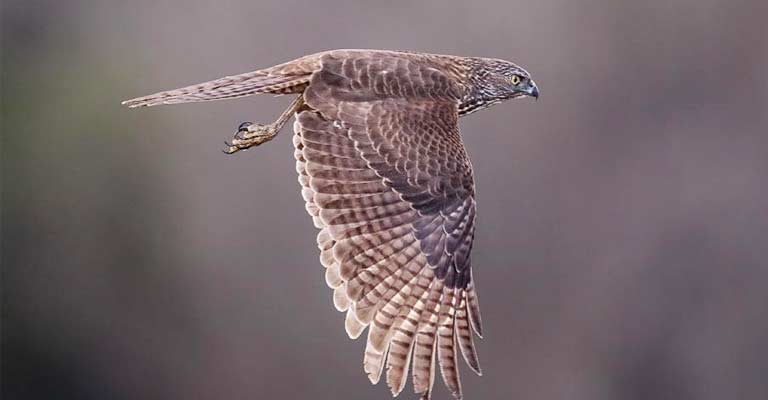
The Brown Goshawk (Accipiter fasciatus) is a species widely distributed across Australia, New Guinea, and nearby islands. This bird, closely related to the Goshawk, showcases a varied coloration of brown plumage with distinctive barring.
Its adaptability is evident in its ability to inhabit diverse environments, including forests, woodlands, and urban areas. The Brown Goshawk, like its relatives, is an agile hunter, preying on birds and small mammals.
Crested Goshawk
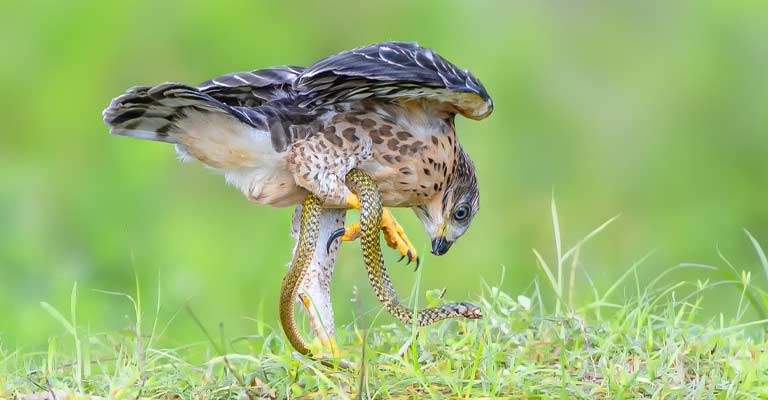
The Crested Goshawk (Accipiter trivirgatus) is a bird of prey found in Southeast Asia. Distinguished by its distinctive crest, this species shares the Goshawk’s predatory prowess.
Its preferred habitats include forests and wooded areas, where it employs its sharp talons and keen vision to capture a variety of prey, from birds to insects.
Grey Goshawk
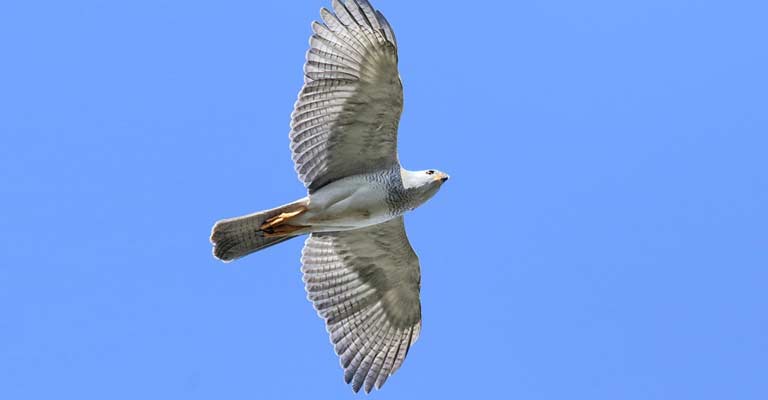
The Grey Goshawk (Accipiter novaehollandiae) is a raptor indigenous to Australia and surrounding islands. Similar to the Goshawk, this bird has adapted to diverse habitats, ranging from rainforests to open woodlands.
Its plumage, often varying between gray and white, provides effective camouflage in its surroundings. The Grey Goshawk, like its counterparts, preys on a range of smaller birds and mammals.
Red Goshawk
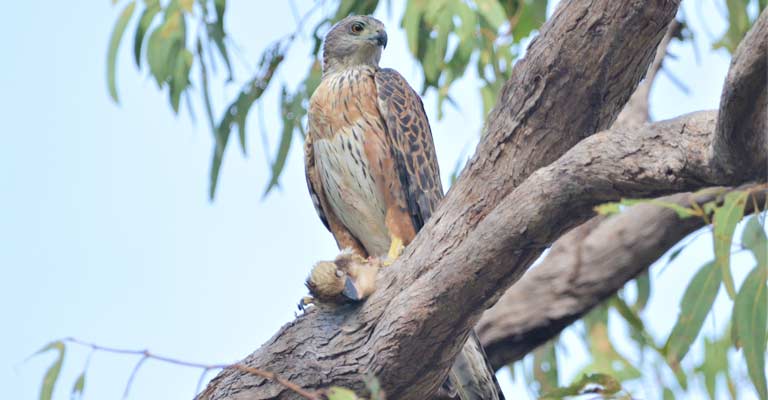
The Red Goshawk (Erythrotriorchis radiatus) is a striking raptor native to northern Australia and New Guinea.
Known for its distinct red plumage, this goshawk prefers a habitat comprising savannas, woodlands, and open forests. Its diet primarily consists of birds and mammals, showcasing its prowess as an adept hunter.
Slaty-Mantled Goshawk
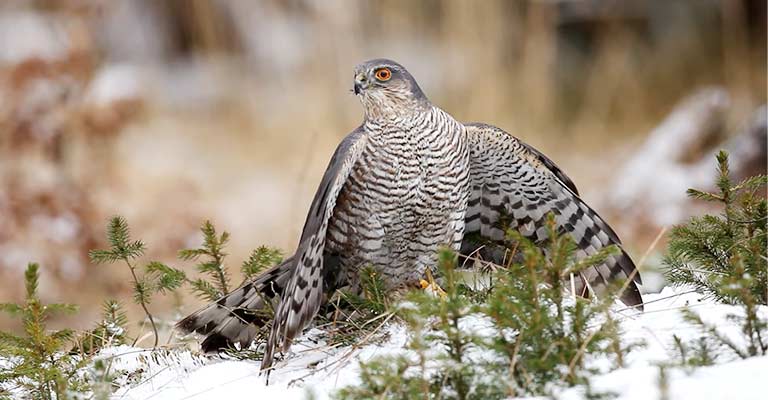
The Slaty-Mantled Goshawk (Accipiter luteoschistaceus) is found in parts of Southeast Asia, particularly in the Philippines.
This species exhibits a unique coloration with slaty-gray plumage, providing effective camouflage in its forested habitats. It preys on a variety of birds and small mammals within its range.
Gabar Goshawk
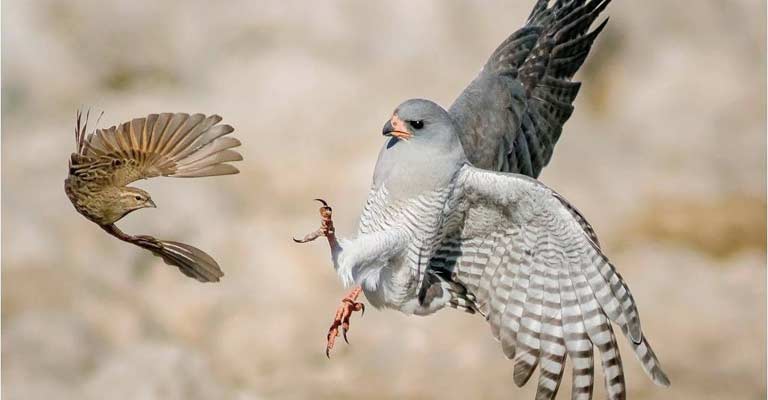
The Gabar Goshawk (Micronisus gabar) is a small but agile bird of prey found in sub-Saharan Africa.
Recognized for its compact size and distinctive white underparts, this species inhabits a range of environments, including savannas and open woodlands. Its diet primarily consists of small birds.
Eastern Chanting Goshawk
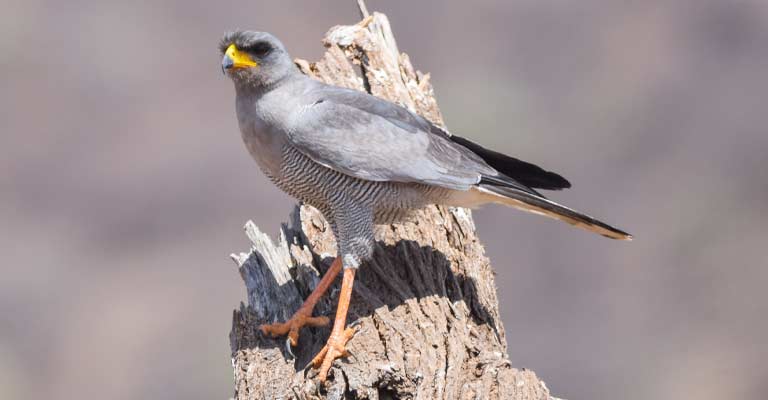
The Eastern Chanting Goshawk (Melierax poliopterus) is a raptor native to eastern and southern Africa.
As a skilled hunter, this goshawk has adapted to a range of environments, from arid savannas to grasslands. Its diet includes small mammals, birds, and reptiles.
Dark Chanting Goshawk
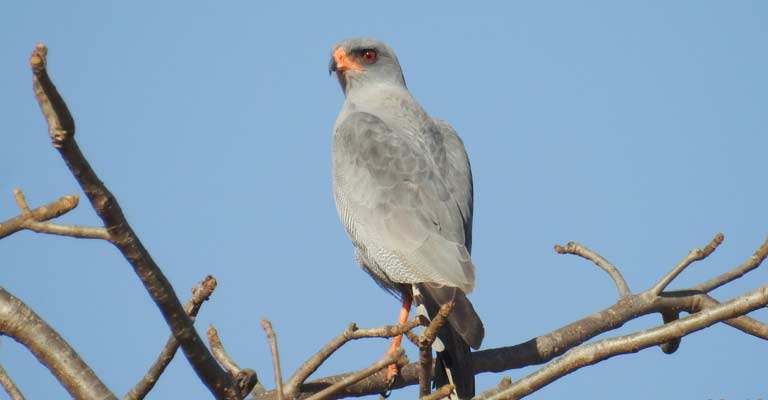
The Dark Chanting Goshawk (Melierax metabates) is a species found in sub-Saharan Africa.
It is characterized by its dark plumage and inhabits a variety of landscapes, including woodlands and savannas. Like other goshawks, it preys on small mammals and birds.
Pale Chanting Goshawk
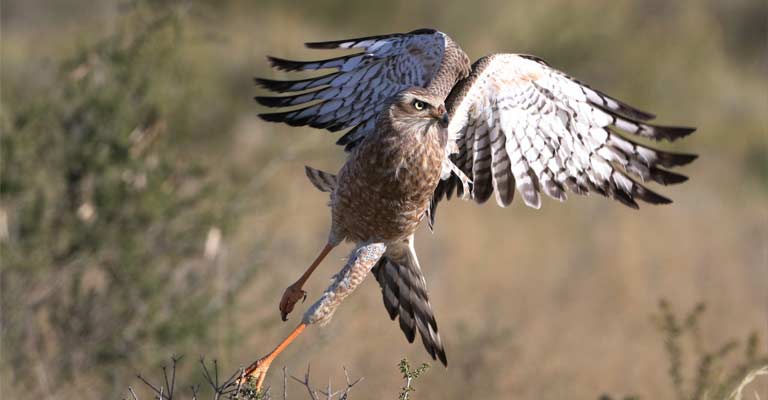
The Pale Chanting Goshawk (Melierax canorus) is another member of the Melierax genus found in Africa.
Distinguished by its paler plumage, this species thrives in arid and semi-arid regions. Its diet consists of small birds, reptiles, and insects.
Fiji Goshawk
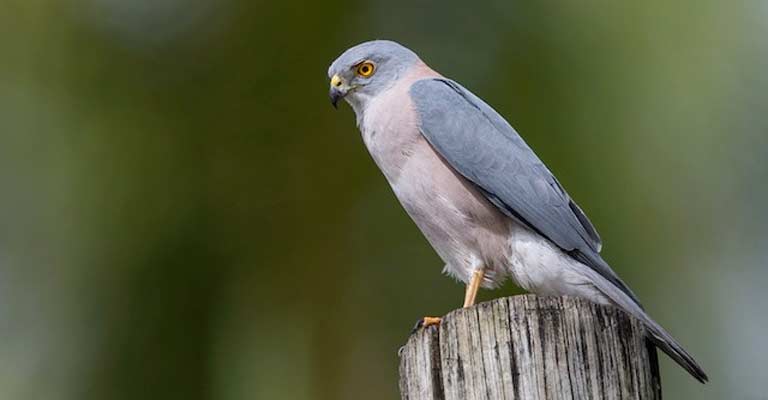
The Fiji Goshawk (Accipiter rufitorques) is endemic to the Fijian islands.
Adapted to the unique ecosystems of these islands, it preys on birds and insects. The Fiji Goshawk exhibits distinctive plumage, often displaying a reddish-brown coloration.
These goshawks, with their diverse geographic distribution and unique adaptations, contribute to the rich biodiversity of their respective habitats.
From the vibrant landscapes of Australia to the diverse ecosystems of Africa and Southeast Asia, each species plays a vital role in its ecosystem as a skilled predator.
Goshawk Life History
The Goshawk, scientifically known as Accipiter gentilis, is a majestic bird of prey that belongs to the Accipitridae family.
Known for its powerful build, swift flight, and remarkable hunting prowess, the Goshawk inhabits diverse ecosystems across the Northern Hemisphere.
This bird’s life history is a fascinating blend of ecological adaptation, intricate nesting behavior, and conservation challenges.
Food
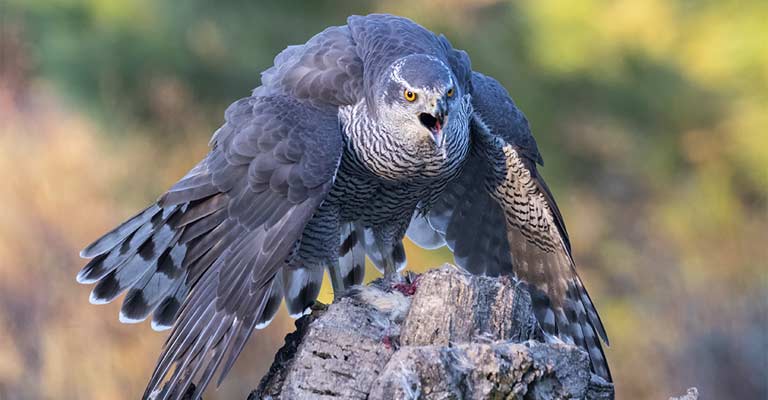
Goshawks are carnivorous birds with a diverse diet primarily consisting of medium-sized birds and mammals.
They are agile hunters, capable of ambushing prey from concealed perches or engaging in high-speed pursuits through dense vegetation.
The Goshawk’s menu may include pigeons, crows, squirrels, and occasionally larger prey such as rabbits and hares.
Habitat
These raptors are adaptable to a range of habitats, including forests, woodlands, and open landscapes. They often prefer areas with a mix of dense vegetation for cover and open spaces for hunting.
Goshawks can be found in both coniferous and deciduous forests, and their distribution may vary depending on the availability of suitable prey.
Range Map
The Goshawk’s range extends across the Northern Hemisphere, encompassing regions in North America, Europe, and Asia.
A detailed range map would depict their distribution, highlighting the specific areas where various subspecies are found.
Nesting
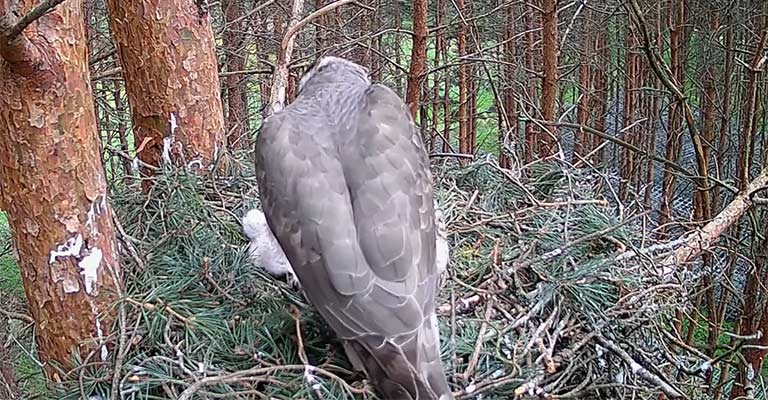
Goshawks exhibit elaborate nesting behaviors. They construct large nests made of sticks and lined with softer materials such as moss and feathers.
Nest sites are strategically chosen, often in the canopy of tall trees, providing a vantage point for hunting and protecting the nest from potential predators.
Here are all the essential nesting details of Goshawk (Accipiter gentilis):
| Aspect | Details |
| Clutch Size | 2 to 4 eggs |
| Number of Broods | Typically one per breeding season |
| Egg Length | Approximately 58-68 mm (varies by subspecies) |
| Egg Width | Approximately 45-52 mm (varies by subspecies) |
| Incubation Period | 28 to 35 days, primarily by the female |
| Nestling Period | 35 to 45 days, until fledging |
| Egg Description | Pale bluish-white or greenish-white may have brown or gray markings |
| Nest Structure | Large platform of sticks, lined with softer materials like moss and feathers |
| Nest Placement | Typically in the canopy of tall trees, providing a vantage point |
| Parental Care | Both parents share incubation and feeding responsibilities |
| Fledgling Independence | Juveniles become independent hunters after fledging |
| Nest Defense | Adults vigorously defend the nest against potential threats |
| Re-nesting Attempts | This may occur if the first nesting attempt fails |
Breeding
Breeding season for Goshawks typically occurs in the spring. Courtship displays involve aerial acrobatics and vocalizations.
Once paired, the female lays a clutch of eggs, and both parents share responsibilities in incubation and raising the offspring.
The chicks undergo rapid development, transitioning from helpless hatchlings to independent hunters in a matter of weeks.
Diseases
Goshawks are susceptible to various diseases, including those transmitted by parasites and environmental contaminants.
Avian diseases, such as avian influenza, can also impact their populations. Monitoring and understanding these threats are crucial for conservation efforts.
Treatment
In cases of diseases affecting Goshawk populations, interventions may involve veterinary care for individuals in captivity or targeted efforts to mitigate the spread of diseases in the wild.
Conservationists may implement measures such as habitat restoration and disease surveillance to promote the overall health of Goshawk populations.
Conservation
Goshawks face conservation challenges, including habitat loss, persecution, and environmental contaminants.
Conservation efforts often focus on protecting and restoring their habitats, regulating hunting practices, and monitoring populations to ensure sustainable management.
Additionally, public awareness campaigns play a crucial role in garnering support for the conservation of these magnificent birds.
The life history of the Goshawk is a captivating narrative of adaptation, survival, and the delicate balance between predator and prey in diverse ecosystems.
Conservation initiatives are essential to safeguard these raptors and ensure their continued presence in the wild.
10 Fun Facts About Goshawk
Here are the 10 amazing fun facts about Goshawk:
- Diverse Species: The term “Goshawk” encompasses a diverse group of species found across various continents, from the dense forests of North America to the arid landscapes of Africa and the islands of the Pacific.
- Majestic Appearance: Goshawks are known for their majestic appearance, featuring a compact body, powerful wings, and a distinctive facial mask. Their striking plumage varies among species, ranging from shades of gray and brown to vibrant reds and whites.
- Expert Hunters: Goshawks are exceptional hunters with incredible agility. They are known for their ability to navigate through dense vegetation during pursuit, capturing prey with precision using their sharp talons.
- Adaptability: These birds are highly adaptable, inhabiting a wide range of ecosystems, including forests, woodlands, savannas, and urban areas. This adaptability is evident in the diverse species that have successfully colonized different environments.
- Monogamous Behavior: Goshawks exhibit monogamous behavior during the breeding season. Once a pair forms, they engage in elaborate courtship displays involving aerial acrobatics and vocalizations, strengthening their bond.
- Elaborate Nesting: The nesting behavior of Goshawks is intricate. They construct large nests made of sticks and line them with softer materials such as moss and feathers. Nest sites are strategically chosen, often in the canopy of tall trees.
- Impressive Clutch Sizes: Female Goshawks lay a clutch of 2 to 4 eggs during the breeding season. The eggs are pale bluish-white or greenish-white, occasionally marked with brown or gray, showcasing a diversity of patterns among species.
- Active Parental Involvement: Both male and female Goshawks actively participate in incubating the eggs and caring for the nestlings. This shared responsibility emphasizes the importance of cooperation in raising their offspring.
- Swift Development: Goshawk chicks undergo rapid development, transitioning from helpless hatchlings to independent hunters within a relatively short period. This fast-paced growth ensures their survival in the wild.
- Conservation Challenges: Despite their adaptability, Goshawks face conservation challenges, including habitat loss, persecution, and exposure to environmental contaminants. Conservation efforts are crucial to maintaining healthy populations and ensuring the continued existence of these remarkable birds of prey.
The Goshawk’s fascinating characteristics, from their adaptability and hunting strategies to their distinctive courtship displays, contribute to their status as captivating and resilient members of the avian world.
Understanding and appreciating these fun facts shed light on the intricate lives of these remarkable raptors.
Wrapping Up
The Goshawk emerges as a captivating and resilient species, its existence woven intricately into the fabric of diverse ecosystems across the Northern Hemisphere.
From their adaptability to varied habitats to their prowess as agile hunters, Goshawks showcase the wonders of avian evolution.
Their distinctive plumage, powerful flight, and elaborate courtship rituals add layers to their mystique, making them not only subjects of scientific study but also sources of inspiration and awe.
Yet, amidst their remarkable traits, Goshawks confront conservation challenges, reminding us of the delicate balance between human activities and the preservation of these magnificent birds of prey.
As we delve into the intricacies of their life history, nesting behaviors, and unique adaptations, it becomes clear that safeguarding the Goshawk requires a collective commitment to conservation.
Only through such efforts can we ensure that future generations will continue to marvel at the beauty and resilience of the Goshawk in the ever-changing landscapes they call home.